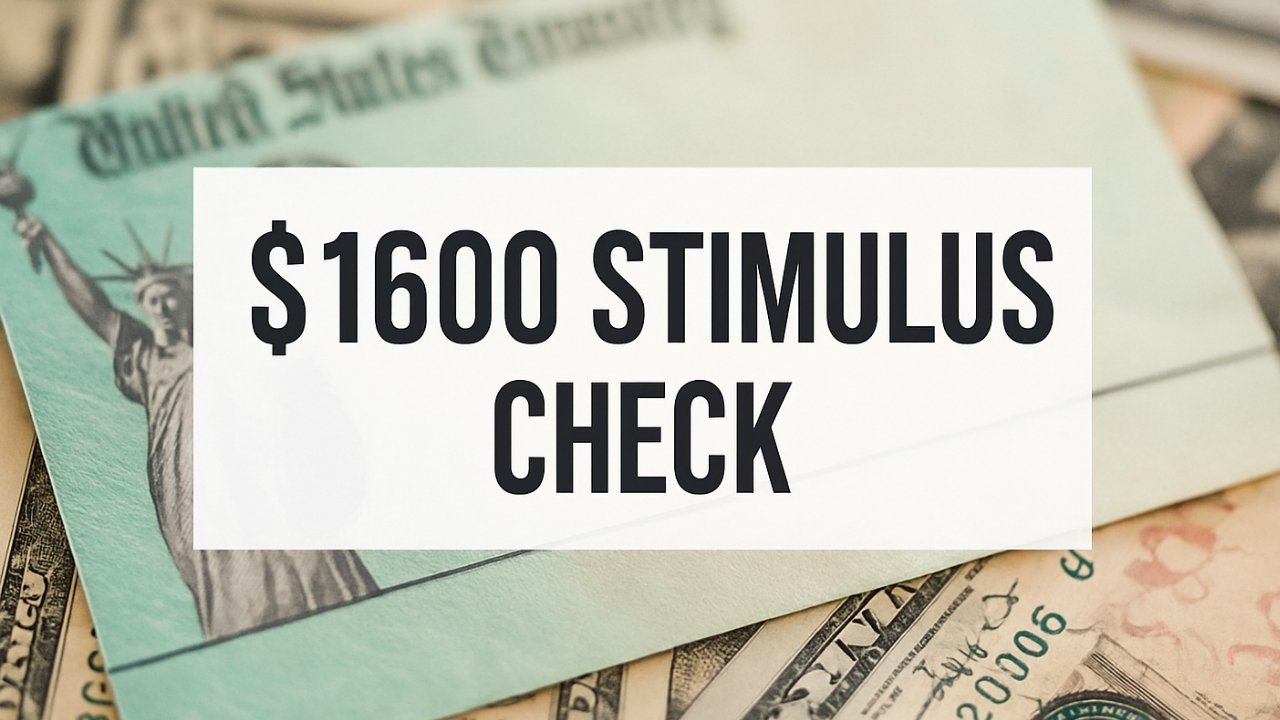In a pivotal move echoing earlier economic relief efforts, a $1,600 stimulus check has been announced for 2025. This initiative stems from a broader strategy to reallocate surplus state revenues to residents, primarily under Colorado’s Taxpayer’s Bill of Rights (TABOR). The framework has gained renewed national attention, as it aligns with fiscal principles long promoted by former President Donald Trump—targeted, direct support without long-term federal deficit expansion.
Unlike universal stimulus rollouts during the pandemic, the 2025 initiative stands out due to its decentralized execution. It leverages Colorado’s state revenue surplus from the 2024 fiscal year, effectively redistributing funds to those who meet residency and filing conditions. In a period still marked by inflationary stress and wage stagnation, this structured return of taxpayer dollars comes as both a financial necessity and a governance milestone.
While not directly ordered by the federal government, the $1,600 payment concept reinforces the notion that state-led relief models, supported by conservative tax structures, can bring real financial impact to households. For eligible Colorado residents, this means a substantial refund in 2025 without new federal borrowing or complex application processes.
How the $1,600 Stimulus Emerged

At the heart of the 2025 stimulus is Colorado’s TABOR mandate, which requires the state to return any revenue that exceeds a predefined cap set by law. In 2024, Colorado’s tax collection exceeded this cap by over $1.5 billion, setting the stage for a large-scale refund in the following year. This resulted in allocations of $800 for individual filers and $1,600 for joint filers, effectively labeled a “stimulus check” due to its purpose and distribution method.
This payment should not be confused with federal stimulus checks issued by the IRS. Instead, it is a state-managed fiscal refund, tied directly to tax contributions, residency status, and legal compliance.
Eligibility Requirements for 2025 TABOR Stimulus
To benefit from this initiative, individuals must satisfy specific eligibility standards designed to prioritize transparency and prevent fraudulent claims.
- Must be a full-year Colorado resident for the 2024 tax year.
- Aged 18 or older as of January 1, 2025.
- Lived in Colorado for at least 183 days during 2024.
- Filed a 2023 Colorado state tax return on time.
- Must not have any disqualifying criminal convictions that affect financial benefits.
These requirements ensure that the refund is distributed fairly to law-abiding residents who contributed to state revenue during the past fiscal cycle.
Breakdown of Payment Categories
| Filing Status | Maximum Refund Amount |
|---|---|
| Individual (Single Filer) | $800 |
| Married (Joint Filers) | $1,600 |
| Head of Household | $800 |
In the case of partial-year residency, the refund amount may be adjusted proportionally. Also, individuals who owed back taxes or received state offsets may see reductions in their final amount.
How to Apply and Secure the Payment
The state has streamlined the refund process to encourage timely participation. There is no separate application for those filing a standard Colorado tax return, as eligibility will be automatically determined based on tax records.
Steps to Ensure You Receive the Check:
- File your 2024 state tax return by April 15, 2025.
- Make sure to provide accurate bank account details for direct deposit.
- Check your residency duration and legal documents for eligibility.
- Track updates via the Colorado Department of Revenue’s website.
- Respond promptly to any queries or correction notices from the department.
Those who qualify and file within the deadline are expected to receive their payments between June and August 2025, aligned with the fiscal processing schedule.
Timeline of Refund Distribution
| Date | Event |
|---|---|
| January – April 2025 | Tax filing period |
| April 15, 2025 | Final deadline for tax return submission |
| May 2025 | Review and verification by state authorities |
| June – August 2025 | Disbursement of refunds |
It’s worth noting that delayed filings or discrepancies in bank details may cause payment delays, pushing the timeline into Q4 of 2025.
Why the 2025 Stimulus Is Different
While past federal stimulus checks were emergency measures triggered by national crises, this 2025 relief is rooted in fiscal discipline and state-led governance. Its issuance based on surplus collection reflects a forward-thinking model of economic management. The state ensures that excess earnings are not hoarded or misallocated but are instead returned to the very taxpayers who made them possible.
This initiative is also politically symbolic. The terminology and design echo conservative economic ideologies associated with Trump-era fiscal planning, including direct payment, no increase in public debt, and state-level execution without federal interference.
What Residents Should Keep in Mind
Things to Remember:
- This is a refund, not a welfare benefit.
- Payment is only made to those who have complied with tax obligations.
- Amounts may vary for filers with tax debts, offsets, or partial-year residency.
- The refund may be subject to garnishment in cases of child support arrears.
Documents You’ll Need:
- Colorado tax return acknowledgment (2023 & 2024)
- Proof of address and duration of residency
- Valid photo ID and SSN or ITIN
- Bank account details for direct transfer
Residents are encouraged to avoid third-party services or agents offering to “help” for a fee. The refund process is free and securely handled by the state.
Practical Relief, Strategic Execution
The $1,600 stimulus check in 2025 offers more than just momentary financial relief—it showcases how responsible governance and public accountability can intersect to deliver timely support. Colorado’s transparent management of its TABOR surplus has not only put money back into citizens’ hands but has also highlighted a scalable model for other states.
In a political climate often riddled with fiscal debates, this initiative stands out as policy in action, grounded in constitutional economics and civic trust. Whether viewed as Trump-inspired relief or a TABOR-driven reimbursement, the outcome is clear: eligible Coloradans will benefit from a meaningful financial return in 2025.